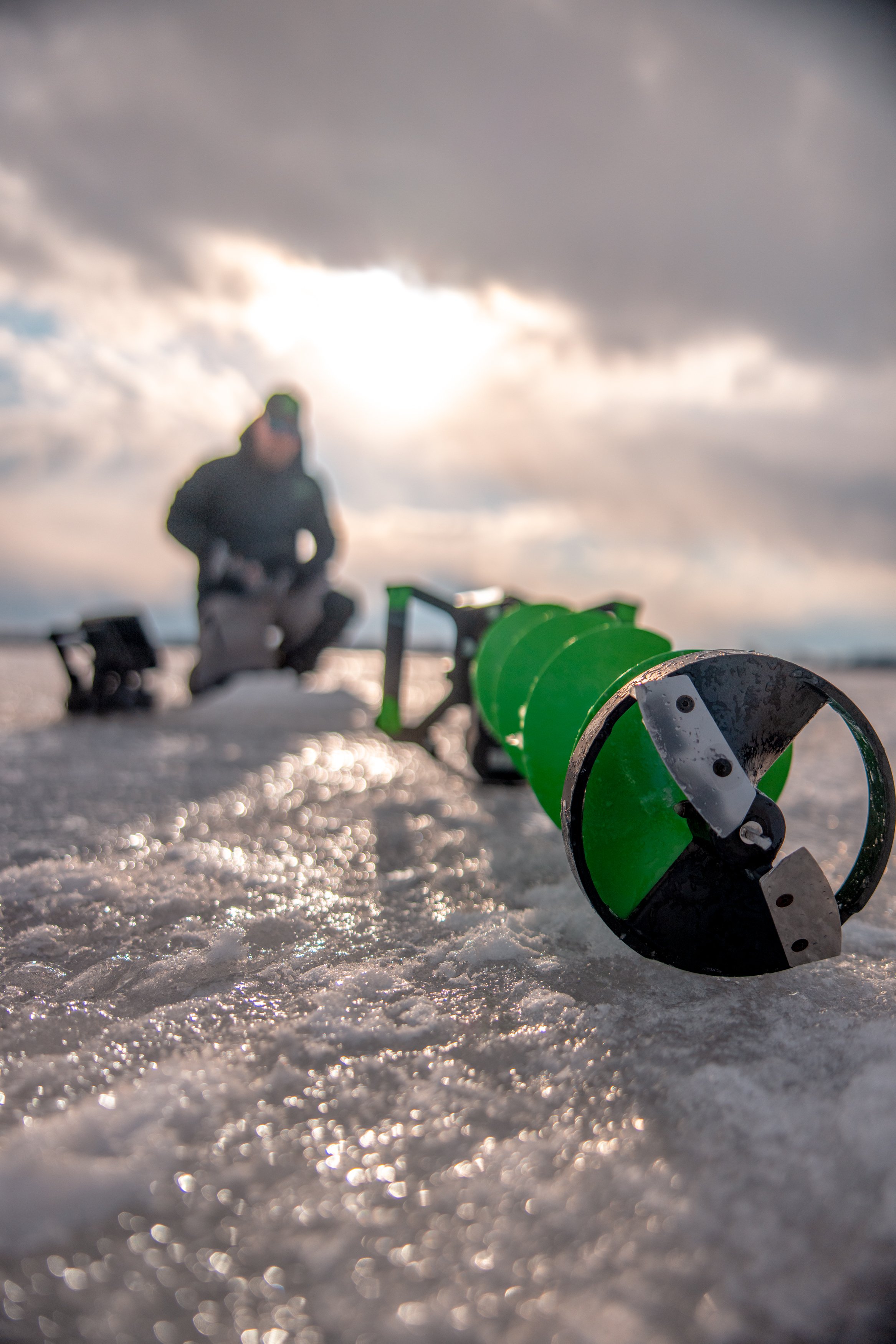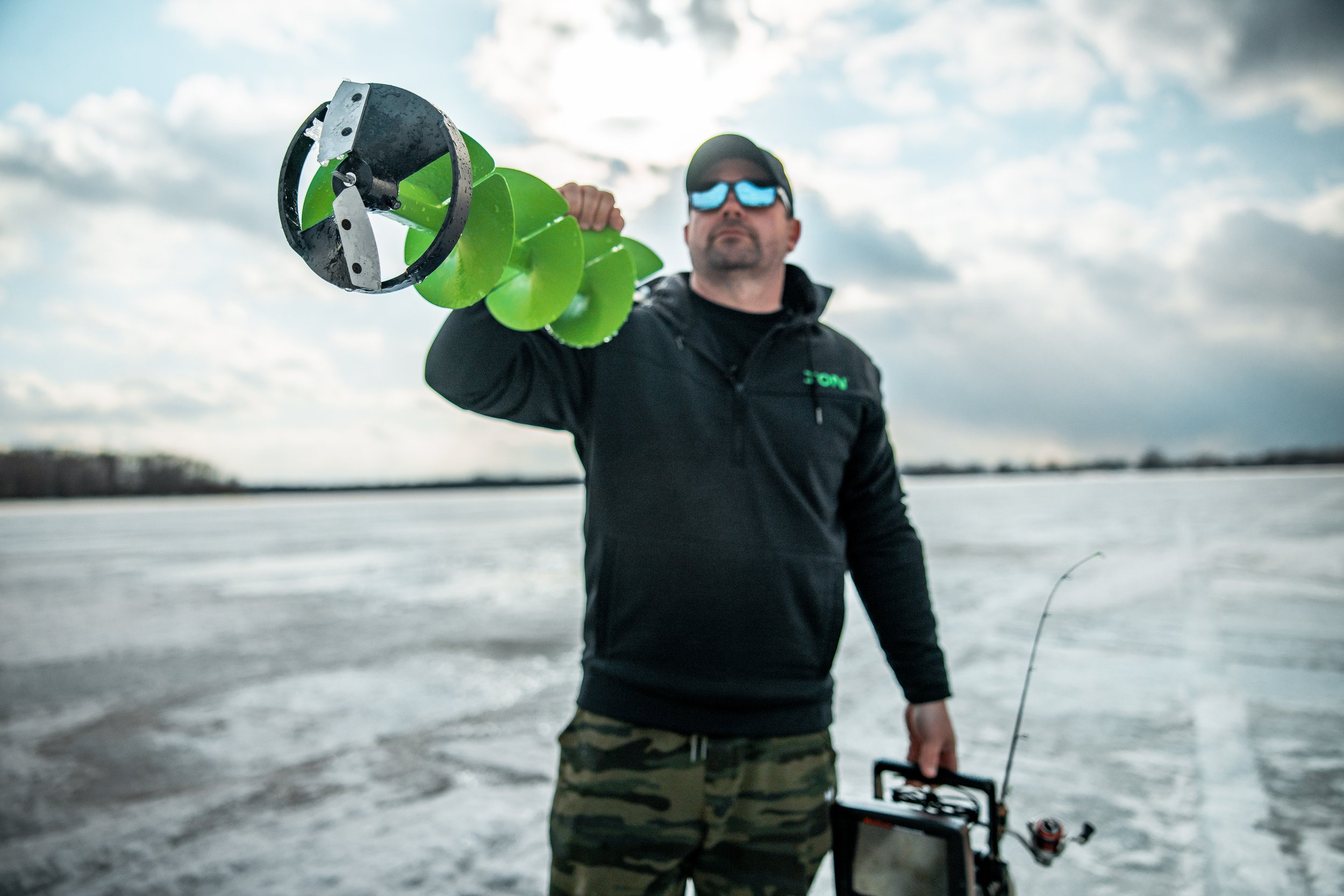The Ion Alpha checks all the boxes for speed, weight, cutting capacity, and cost.
Once deer season is over for many of us and the calendar flips, so too does our interest turn to ice fishing. If you’re like me, that starts with some equipment review and accounting. I look at what I can live with and what I need to replace, which always tends to start with the big-ticket items. Shelters, electronics, and ultimately, the one tool that is necessary to do it all – your ice auger. No hole means no fishing, and these days, there’s a pile of ways to drill ice and get your fix when the hardwater hits.
Five years ago, I would’ve started the discussion with gas-powered offerings, and made a small mention of some electric options for those so inclined. These days, it’s completely the other way around. Electric augers dominate the market, and gas options are for those drilling through the thickest Canadian Shield ice and doing so in great volume. For good reason too, carburetors are messy and so is the fuel that drives them, while electric is clean, easy, and increasingly just as powerful. It’s also lighter, so if this is the year you go electric, I’ll focus the discussion squarely on your options with Lithium battery powered ice augers.
While it would seem that our options have grown with two or three sets of fuel options powering ice augers, in reality, there’s less augers on the market than in the gas days. Manufacturers have narrowed down options in electric to less than a dozen contenders, and that’s a good thing for the consumer. It’s a testament to how versatile electric augers are, from drill adaptive types that are literally just an auger bit where you supply a cordless drill, to dedicated auger bit plus motor options that can do a great deal more than their gas-powered predecessors. All the positive attributes of electric have simply reduced the need for additional models.
From here, it really comes down to the big 4 attributes that should dominate your decision-making process:
Speed – For several years now, the market has commanded speed, which is a consideration for most consumers buying a new auger. Speed is listed as a metric in inches per second, with augers drilling in the 3+ inches/second for an 8” drill being extremely fast. Speed doesn’t just give you an ego boost on ice, it makes your day considerably more productive with less effort.
Weight – Initial electric auger offerings were in the 22-24 lb. range, and though they were revolutionary in design and power, offered few other attributes to anglers. After more than a decade of design and improvements later, augers these days tip the scales as much as 10 lbs. lighter. The overall idea is that the best auger doesn’t accomplish much if you’re too tired to drill more holes with it, as it’s more desirable to spend your energy fishing, not just drilling holes.
Cutting Capacity – This number describes the total volume of drilling you can perform on a single charge, often expressed in terms of the inches of ice you can drill. In effect, this metric tells you roughly the number of holes you’ll be able to drill on a given day with one battery. 2000”es is on the high end for most 8” augers, and it’s like bowling, you want a high score here unless you know you’re only drilling a handful of holes each day.
Cost – Fully equipped augers these days with drill bit and motor come in around the $500-$600+ range, but have different options with at times, multiple batteries, poly vs. metal auger flighting options, and of course brand. If you do your homework, you’ll end up with an auger that excels in the above attributes – speed, weight, and cutting capacity – at the most reasonable price.
Additional Considerations
When shopping, make sure you’re comparing apples to apples in terms of these attributes, but also consider a few other variables. Aggressive, curved and extremely angled blades will often cut faster but can be difficult to re-drill old holes with. Flat blades, or slightly angled and non-curved options can make it smoother to cut ice with overall. We don’t want speed to come at the expense of the drilling experience, where you feel like you’ve been beat up after a day of fishing.
Warranty is another consideration, as though issues with this technology are few and far between, anything mechanical can fail at any time. Look for the longest warranty out there, both on the full auger itself but also the batteries. With lithium batteries, again, issues are few but these powerplants drive a great deal of expense for the auger. That means your entire purchase should be covered including the batteries as they can fail, especially in the conditions we drag our ice gear out into.
The newest designs of augers also have a variable trigger speed option, meaning that if you press down lightly on the throttle button, the auger turns slowly. Press down fully and the bit spins full speed. Adjust the pressure you put on the button, and you can drill at whatever speed you like. It’s a premium feature that allows easier cutting in a fish-house without throwing ice chips everywhere, and helps start new holes, redrill old holes, and drill touching holes far more easily. Consider it a requirement if you’re looking to buy new anyway.
Ultimately, we’re looking for an auger that drills quickly and smoothly, is lightweight, and can drill the most holes on a single charge without breaking the budget. Premium augers in the category will offer the best of these options and be on the higher end of the price scale, yet present the best value by far considering what you’re getting. You get what you pay for, but price shopping never hurts provided you go into it eyes wide open, knowing exactly what you’re getting in terms of inches cut per second, total weight, and the cutting capacity on a single charge.


